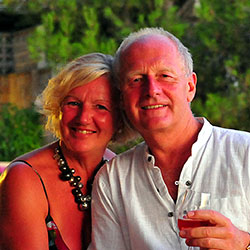One step away from idyllic Vietnam into the dark of the Cu Chi tunnels and War Remnants museum.
When Vietnam has so much to offer to travellers by way of beaches, bays, culture and countryside, you might wonder why war still features so strongly in its appeal to tourists.
With the Vietnam War (1955-1975) a not so distant memory for many still alive today, its killing fields and museums still exact a significant draw on veterans, historians and tourists alike; interested in family associations, culture, social history and war.
With the war being a relatively recent event, the legacy of it is all too evident in Vietnam – both in the remnants of war that litter the countryside and the significant socio-economic fallout of a poisoned landscape, much of it still incapable of producing a ‘safe’ crop today.

From our own perspective, our time at the Cu Chi tunnels and latterly in the ‘War Remnants Museum’ in the environs of Ho Chi Minh City (Saigon), serves to reinforce the absolute horror and folly of war.
As with most conflicts globally, major powers only involve themselves on commercial rather than humanitarian grounds. Nevertheless it is the human cost of political decision making that never ceases to shock us.
Vietnam evolved from disaffection by a people with its French colonial masters to a fully blown guerrilla war where often reluctant and immature young Americans of a ‘hippy’ generation fought a besieged army and often beleaguered innocent civilians in a theatre that was as impenetrable as it was bloody.
There’s nowhere that brings this into sharp focus as much as the Cu Chi Tunnels.

A network of tunnels created initially during the time of French occupation – to secrete young men away from the slave-like practices of the French plantation owners – developed during the war into a network covering over 450 sq kms, with some tunnels running for over 200kms in three distinct levels.
As we walk through the remains of the jungle towards the tunnels (much of the forest is new growth after mine and munition clearance operations), we’re hot and sticky in the high humidity, carrying spare light clothing, water and camera but hear the extremely loud crackle of carbine fire echoing through the trees from a ‘tourist experience’ nearby.

What on earth must it have been like, hacking through dense jungle in intense heat and humidity, wearing full uniform and supplies pack, with a cacophony of gunfire being aimed at you? Sheer hell, we would imagine.
 Our guide stops us by a map that charts the network of tunnels, explaining the three tier system of fighting tunnels, communication tunnels and the lowest accommodation tunnels – the lowest third tier which was never reached by the incessant carpet bombing by American B52s.
Our guide stops us by a map that charts the network of tunnels, explaining the three tier system of fighting tunnels, communication tunnels and the lowest accommodation tunnels – the lowest third tier which was never reached by the incessant carpet bombing by American B52s.
He points out a huge bomb crater beside us and a nearby tunnel entrance. It’s little bigger than the dimensions of a piece of A4 paper, so we decline the offer to enter it. Expertly camouflaged with dry leaf litter, the trapdoor would have been impossible to detect, enabling Viet Cong to materialise at will to ambush enemy troops.
We walk past several examples of brutal medieval ‘mantraps’ that are quite simply horrifying in their sole purpose to maim and kill.
Some tunnels have been conveniently enlarged to accommodate Western visitors but even though we venture along no more than about one hundred feet of them, it’s easy to see how oppressive life must have been.
Apparently, sickness, disease and venomous insects accounted for many deaths, with malaria being second only to battle wounds in the death count among the tunnel dwellers.
We decline the opportunity to fire assault weapons into an earth berm some hundred metres away but it’s this noise we’d heard earlier that set the scene for our tunnel experience.
It’s difficult not to marvel at the ingenuity of the Viet Cong in their recycling of American munitions, manufacture of footwear and utensils, as well as the measures of ventilation and smoke extraction for their tunnels – through termite mounds with ‘rat and snake holes’ in them that are in fact ventilation shafts.
The small museum at the tunnel site is scant preparation for our visit to the War Remnants museum in Saigon.
En route we drive through paddy fields and low vegetation at the roadside that is still incapable of sustaining healthy or edible crops due to the residues of 20 million gallons of dioxin-rich defoliant, Agent Orange (as well as Agent Pink, Green, Purple, White and Blue) sprayed across the landscape to destroy cover for the Viet Cong. This has also had lasting health effects on the population with serious birth defects, cancers and psychological problems.
We are ‘thankfully’ short of time when we reach the museum and can only spend an hour inside.
‘Thankfully’, because the sheer horror of war is comprehensively recorded with newsreel and photographic evidence, together with statistics of loss, death and destruction that has no place in this travel review. It’s compulsive viewing that leaves us ‘embarrassed’ that we are obliged to hurry through it.
 The remnants of war outside – the Chinook helicopter, field guns and aircraft seem misleadingly benign memories of a conflict that brought so much suffering to a country that was ultimately abandoned by America when public pressure at home became too great.
The remnants of war outside – the Chinook helicopter, field guns and aircraft seem misleadingly benign memories of a conflict that brought so much suffering to a country that was ultimately abandoned by America when public pressure at home became too great.
‘Lest we forget’ is a common litany in the aftermath of war but as long as there’s commercial gain involved, history will continue to repeat itself.
Conflicts perpetrated under the guise of idealism; generally revolve around the desire for continued commercial and strategic benefits of resources – in the case of Vietnam, from its three major offshore oilfields.
There are more ‘attractive’ aspects to Ho Chi Minh City than the stark reminders of conflict and much of the old French colonial architecture remains within the quite sophisticated city centre. 
Reminders of war, however, are never far away as we drive by the gates of the presidential palace where tank No 843 of the North Vietnamese Army drove through them in Saigon 43 years ago, as of 30th April 1975 – ending decades of conflict, just hours after the last American helicopter had left.

While Vietnam continues to enchant an ever-increasing number with its still idyllic countryside, beautiful beaches and bays, it would – we think – be remiss of anyone not to acquaint themselves with the fabric of conflict that has helped shape this fascinating country and its people.

Why not ask us to arrange your own tailor-made travel to get closer to the true character of Vietnam, the Orient and the Far East?

 Let us plan your own inspiring journey to Vietnam and the Far East
Let us plan your own inspiring journey to Vietnam and the Far East
Why not download the TLC World guide brochure or give us a call today on 01202 030443, or simply click ‘enquire’ to submit your own personal itinerary request



























